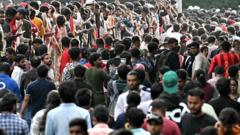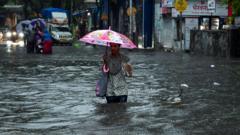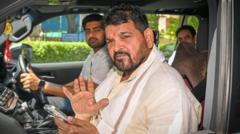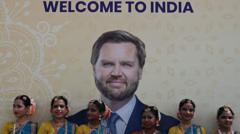Indian cities are rife with pedestrian challenges, from inadequate footpaths to systemic neglect. Activists like Arun Pai and groups such as the Walking Project are advocating for better infrastructure to enhance safety and accessibility for pedestrians, emphasizing the urgent need for systemic change.
Struggles of Pedestrian Life in India’s Urban Landscape

Struggles of Pedestrian Life in India’s Urban Landscape
A deep dive into the challenges faced by pedestrians in Indian cities, highlighting citizen activism and the need for improved walking infrastructure.
In Indian cities, navigating the streets on foot is fraught with challenges as pedestrians often face numerous obstacles, from crumbling footpaths to encroachments from vendors. Arun Pai, a Bengaluru-based activist, has taken this issue into his hands by initiating the "world's longest footpath run," which invites residents to document the barriers they encounter while walking or jogging along an 11km stretch. This challenge not only raises awareness but also assists activists in presenting concrete data to local authorities, urging them to implement specific improvements rather than generic complaints.
Explaining the motivation behind this initiative, Pai emphasizes that having specific details allows citizens to push for actionable changes. “Instead of telling your local politician 'the footpaths are bad', you can ask him or her 'to fix specific spots on a street,’” Pai notes. His organization, Bangalore Walks, is part of a broader movement across Indian cities aimed at making urban environments more pedestrian-friendly. In Delhi, similar advocacy is taking place to promote cycling and walkability, showcasing a nationwide thirst for improved infrastructure for non-motorized transport.
Unfortunately, well-designed footpaths remain a rarity in India's bustling urban centers, where many are obstructed by hawkers, parked vehicles, and even cattle. A recent report from the Walking Project in Mumbai called attention to the dire state of pedestrian infrastructure ahead of state elections, proposing vital changes like designated hawking zones and pedestrian-friendly corridors. According to Vendant Mhatre, the group’s convener, while nearly 50% of Mumbai's population relies on walking, this demographic is often overlooked in transport policy discussions.
The grim statistics surrounding pedestrian safety illuminate the need for change: in 2022, pedestrian fatalities were alarmingly high, with over 10,000 lives lost on highways. Government efforts to enhance safety often focus on futile quick fixes rather than long-term solutions, reinforcing the need for comprehensive pedestrian infrastructure that can handle heavy foot traffic. Research conducted in Chennai revealed that new footpaths significantly increased the number of pedestrians, thereby reducing reliance on motorized transport and lessening adverse environmental impacts.
One challenge facing advocates is the prevailing perception of walking as merely a leisure activity, relegating the need for footpath infrastructure to parks and sidewalks while neglecting pathways leading to critical destinations. “Walking is the most economical and environment-friendly way to navigate one's city,” Mhatre asserts, emphasizing the need for prioritizing pedestrian facilities on par with public transportation.
Civil engineer Geetam Tiwari points to a misguided focus on alleviating vehicular congestion, which often leads to the deterioration of pedestrian pathways. She argues for a paradigm shift that recognizes improving pedestrian access as an integral aspect of urban planning. "Allowing congestion to persist and focusing on improving infrastructure for pedestrians will help solve traffic problems in the long run," she explains.
There is a plea for federal oversight in enforcing improved standards for pedestrian infrastructure and for more cities to adopt Non-Motorised Transport Policies (NMTP) to encourage cycling and walking. As urban centers grow, the urgent need for sustainable pedestrian pathways becomes imperative, leaving it up to citizens to demand change and foster a culture of walking in India’s cities.





















